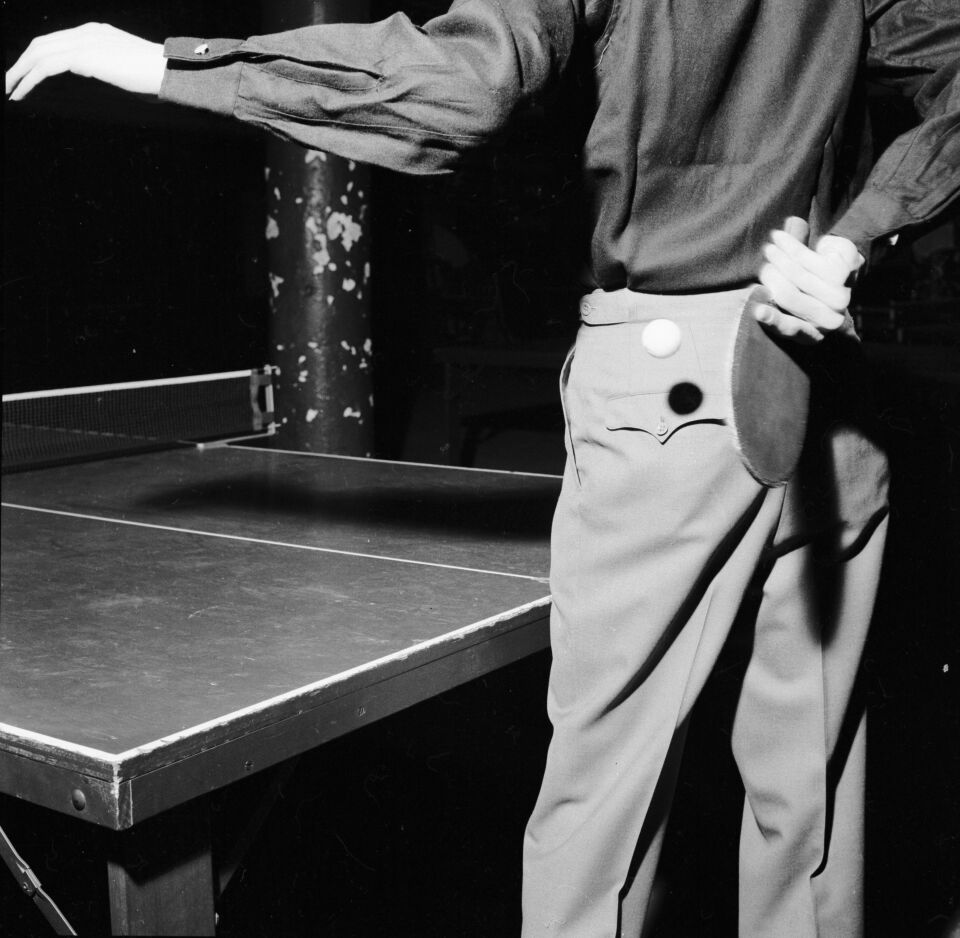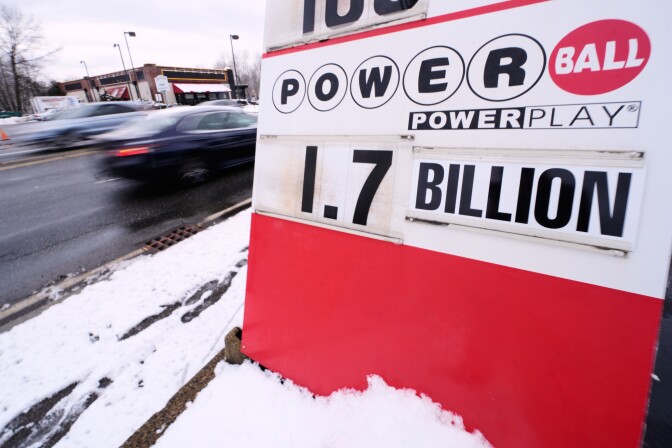As journalists, we measure success not just in clicks or conversions, but in what happens after a story makes its way into the world. Impact isn't always immediate or easily quantified. It can surface quietly — in an email from a listener, a shift in public understanding, or a decision made differently because someone finally has the information they need. In a nonprofit newsroom, those moments matter as much as any headline.
Over the past year, NPR's reporting has met audiences where they are, reflecting the realities they're living every day. Coverage of tariffs, affordability and the cost of living connected sprawling economic policy to household grocery receipts and credit card balances. Investigations explained how decisions made in Washington ripple outward — to farmers, veterans, federal workers and families struggling to stay afloat.
For many listeners and readers, the impact was practical and validating: tools to manage debt, clarity about a confusing economy, or simply the feeling of being seen.
Other stories carried consequences far beyond the personal. Reporting helped reinstate sidelined CDC scientists, prompted congressional investigations and new legislation, restored lifesaving grants, and pushed companies and institutions toward greater transparency and accountability. From the ethics of AI-generated music to secretive government data practices, NPR journalists illuminated systems often hidden from public view — and those stories didn't stop at awareness; they led to action.
And in places where the human cost is hardest to capture, NPR stayed present. From Gaza to Zambia, from immigration courts to National Guard group chats, our reporting centered the lived experiences behind policy and power. In response, listeners told us they donated, spoke up, reconsidered long-held assumptions, or felt less alone.
What follows is just a sampling of the stories NPR staff believe made some of the deepest ripples this year — reminders of what rigorous, compassionate journalism can do, and why the work remains as urgent as ever.
— Thomas Evans, editor in chief of NPR
Extensive coverage of tariffs, the cost of living and affordability reflects NPR audience's reality
"The tariffs story highlighted how big, macroeconomic stories like tariffs were impacting individual Americans, bringing home why politics matters — and telling stories in the way NPR does best," says reporter Emily Feng.
NPR reporters stayed on top of this coverage, from asking Americans to send in their receipts to show tariffs in effect to polling Americans about how they're feeling about the economy. NPR journalists also kept a tracker of Trump's tariff threats and trade deals, as well as continued coverage of the cost of living crisis many Americans are feeling.
Life Kit also created a month-long newsletter series (that you can still sign up for!) about how to pay down credit card debt. More than 100 people emailed us saying how much they appreciated the newsletter and how it helped validate the measures they were taking to pay off their credit card debt. "With helpful newsletters like this, I'm confident I can start and stay on the right path," one subscriber said.
An investigation contributes to CDC lab scientists getting reinstated
When all 27 scientists in the Centers for Disease Control and Prevention's Division of Viral Hepatitis were put on administrative leave in April, they were in the middle of investigations in several states. No other lab in the world has the capacity to genetically trace hepatitis outbreaks — which can be spread in food or by sharing needles — to their source.
NPR exclusively interviewed five scientists at the CDC about the lab's closure and explained the nature of the work the lab does in an investigation. In June, all 27 of the lab's scientists were told they could come back to work at the CDC, along with more than 400 other workers whose layoffs were revoked. "People who worked at the lab attributed getting their jobs back in part to NPR's early reporting on their predicament," reporter Chiara Eisner says.
Reporting on DOGE leads to an independent investigation and new legislation
Jenna McLaughlin's exclusive reporting on how DOGE may have taken sensitive labor data quickly led to outcry from more than 50 lawmakers demanding an independent investigation into DOGE's activities at the National Labor Relations Board, the Inspector General for the NLRB launching an investigation, and congressional demands that Microsoft provide information about DOGE's use of code to remove sensitive data.
NPR's exclusive reporting on a DOGE staffer's high-level access to an internal farm loan database also prompted immediate reaction on Capitol Hill, demands for answers from lawmakers, and even spurred lawmakers to pen new legislation in response. "The story illuminated the impact of DOGE's secret activities on Americans outside of Washington, particularly farmers who rely on government subsidies and have already been struggling under the collective weight of tariffs, climate change, agricultural consolidation, and other challenges," McLaughlin says.
An exploration of the ethics of labeling AI-generated music helps lead to more transparency
"After an AI project posing as a group of human musicians blew up on Spotify over the summer, I wanted to understand how streaming platforms are responding to the rise of generative AI," reporter Isabella Gomez Sarmiento says. She spoke with a professor of digital forensics, the research team behind an AI detection tool, and a journalist/author who investigated Spotify's business practices. They all emphasized that transparency about generative AI usage is key to empowering both musicians and music fans. "A month later — and after I asked Spotify directly if they had considered implementing an AI tagging system — the company announced it would roll out a new AI spam filter on the platform," Gomez Sarmiento says.
Reporting helps reinstate a grant that could save kids' lives
Elissa Nadworny reported on a 4-year-old named Caleb who has a failing heart, and how a university researcher's federal grant, which could help kids like him, was canceled. That story helped Cornell University make a deal with the White House, reinstating the doctor's grant. "Calling Caleb's mom Nora and telling her the good news was certainly a career highlight," Nadworny says.
Caleb had a question after learning his story might help families like his. "Did I change the whole world?" he asked. Yes, Caleb. You might just have.
"Then, on Thanksgiving, I got more great news: Our story had led to changes in a clinical trial, which meant Caleb was able to switch to a different driver for his artificial heart," Nadworny says. Instead of just 30 minutes running on battery, his new one can be unplugged for up to 8 hours.
An investigation leads to Congress calling for a crackdown on companies charging disabled vets
A group of 43 members of Congress have called for action against unaccredited companies that charge veterans for help filing for disability benefits with the Department of Veterans Affairs.
The move came in response to reporting from NPR that showed the claims consulting industry is using aggressive tactics to make millions off veterans, despite warnings from the VA's lawyers that doing so may be in violation of federal law.
In an encrypted group chat, a group of National Guard members expressed worry over Trump's deployments. NPR sat down with them to hear more
"During a year of President Trump's extraordinary deployments of the National Guard to several cities around the country, this was one of the first times we heard in depth from several guard members about how they're feeling and what they're thinking about," reporter Kat Lonsdorf says.
Telling their stories helped people with HIV get life-saving medication
A few months after President Trump abruptly dismantled USAID, a reporting team went to Zambia to investigate the impact. They found people with HIV whose U.S.-funded clinics, which had provided their daily medication to suppress the virus, had shut their doors without warning. Without the pills, people were getting sick and showing signs of HIV developing to AIDS.
After our stories ran, the Zambian government doubted our reporting — until they did their own investigation. They then worked with a local pastor we'd profiled to help people in the community get their life-saving medication.
We tracked the loss of thousands of jobs as corporate America moves away from DEI
NPR financial correspondent Maria Aspan was first to report on several parts of corporate America's retreat from diversity, equity and inclusion efforts. Her in-depth reporting about one veteran DEI executive told the wider story of the emotional and personal toll this corporate rollback has taken on people working in this once-red-hot field.
Aspan's reporting resonated deeply with NPR's audiences. "As someone who has dedicated over two decades to DEI work, I felt every word of this," one reader wrote in response.
Reporting on missing children in Syria who were likely being trafficked leads to arrests and other action
"This reporting has had a cascading impact," senior producer Liana Simstrom says. It helped trigger the arrests of several senior orphanage workers that NPR had interviewed and photographed, including one who was widely suspected of trafficking the children. It also helped lead to the creation of a high-level government committee to trace the missing children. Our story also led to the SOS Children's Village acknowledging that they did not know the full extent of the trafficking of children that happened under their watch.
A steady stream of stories from Gaza kept a spotlight on the conflict
An NPR exclusive dove deeply into how U.S. policy on Israel's war in Gaza led to a declaration of famine in the enclave after nearly two years of war. In interviews with more than two dozen former senior U.S. officials, NPR reporters found that many people who were directly involved in shaping U.S. policy were now asking: Did we do enough to prevent this? "We were struck by just how many former U.S. officials wanted to talk. The conversations were emotional and raw, and offered a look into the incredibly difficult and complicated relationship between the U.S. and Israel as the conflict progressed," reporter Kat Lonsdorf says.
It has been difficult to chronicle the enormous losses to Palestinian families during Israel's offensive in Gaza, one of the most destructive in recent history. An Israeli strike on a Gaza apartment building -- one of the deadliest of the Israel-Hamas war -- killed 132 members of one family last year. The few survivors documented the dead. Working with journalists in Gaza, we reconstructed what happened to this large family in a single moment.
NPR reporter in Gaza Anas Baba reported on the quest for food in the territory. He wrote: "I faced Israeli military fire, private U.S. contractors pointing laser beams at my forehead, crowds with knives fighting for rations and masked thieves — to get food from a group supported by the U.S. and Israel called the Gaza Humanitarian Foundation." The foundation has since stopped operations.
Many people wrote in response to Planet Money's reporting on money falling apart in Gaza, saying that it represented the human day-to-day experience of life in Gaza and of being connected and wanting to help someone in the enclave. "Many listeners also tell us they donated to the characters in the piece as a result," executive producer Alex Goldmark says.
We told stories of the chaos of the Trump administration's cuts to the federal workforce and the people impacted
Throughout all the twists and turns, labor and workplace reporter Andrea Hsu was there every step of the way covering developments to the federal workforce and speaking to people directly impacted. "We stayed on top of the story and reported on what ultimately happened in these cases, and the impact it had on people's lives," Hsu says.
Early on during the chaos of the first "fork in the road" buyout offer and the purge of probationary employees — mostly more recent hires — multiple lawsuits against the Trump administration cited news stories, including from NPR. "There was so little official information coming out at the time that the lawyers were relying on media reports," Hsu says, including NPR's reporting.
Hsu shared stories from some of the 317,000 workers who are now out of the federal government throughout the year, interviewing military veterans who were summarily fired from their civilian jobs and dedicated civil servants who chose to walk away, among many others.
Reporting on a Trump administration citizenship tool finds U.S. citizens removed from voting rolls
For much of the year, NPR's Jude Joffe-Block and Miles Parks have reported on the DOGE-aided expansion of a federal data system known as SAVE and how it's been turned into a de facto tool to verify U.S. citizenship. Trump and his allies have long falsely claimed that U.S. elections are rife with noncitizens voting.
Joffe-Block and Parks broke the first story about how the administration overhauled SAVE in June and have been on the story aggressively ever since, reporting on how states were being encouraged to run their entire voter lists through it and how close to 50 million registered voters have been scrutinized.
More recently, Joffe-Block found that U.S. citizens are being flagged by the tool, and told the story of one U.S. citizen who was removed from the rolls as a result. Their reporting has been cited in multiple lawsuits around the system.
From ICE to immigration judges, NPR continued to report on immigration issues
NPR was the first to highlight the administration's practice of firing immigration judges and tracked multiple rounds of dismissals over the course of the year. Ximena Bustillo's reporting on understaffed immigration courts, for example, showed the human cost of the layoffs, as well as the cost to due process. She also worked with intern Anusha Mathur to show that judges with a background in immigrant defense were more likely to lose their jobs. The reporting helped uncover a lesser-known facet of the administration's crackdown and set the bar for coverage for other outlets.
"My story explicitly calling out DHS for calling on DACA recipients to self-deport definitely caused a stir," Bustillo says. "It's in the vein of exclusive reporting on how other people who had some immigration process or deportation protection have seen that pulled away and the impact that has had on the ground."
After NPR's reporting, legislation was introduced to ensure judges who retire or resign can't avoid some investigations into misconduct
Following NPR's reporting, the top Democratic lawmaker on the House Judiciary Committee introduced legislation that would ensure judges who retire or resign are not able to avoid or short-circuit investigations into allegations of misconduct. The Judicial Conference of the United States — the policymaking body for the federal courts — proposed new rules that would cover attorneys' fees for clerks and other employees who file meritorious workplace complaints and that would guarantee that judges who preside over complaints would not work in the same district as the alleged wrongdoers.
Federal court employees told NPR reporter Carrie Johnson that some individual judges have discussed the story with their clerks. She also heard that at a recent training session in Washington, D.C., attendees asked questions about the limitations of the judiciary's current system for assessing claims of misconduct by citing the NPR stories.
Copyright 2025 NPR













